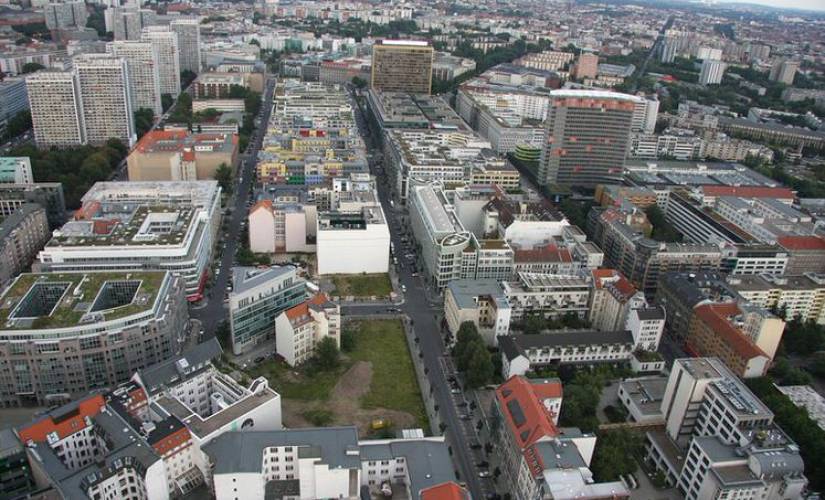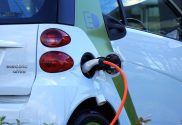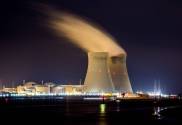Rome wasn’t built in a day, and connectivity through the Internet of Things won’t happen overnight, either. A few cities are leading the pack with IoT implementation, but its widespread application may be easier than you think. Even small installments of IoT technology throughout a smart city can create improvements for all citizens to enjoy.
For example, every commuter has experienced the dreaded rush-hour traffic lights that seem timed to make the trip home long enough to let you watch grass grow. Cities like Pittsburgh are using smart traffic lights to lead the fight against the bumper-to-bumper schlep home and reduce carbon emissions at the same time.
See also: How to avoid a massive smart city pitfall
Still not convinced? The IoT has also found its way into our homes through products like the Nest Learning Thermostat, the SkyBell WiFi Doorbell, and even the Kolibree Smart Toothbrush. Smart products are everywhere, and some of the more forward-thinking cities are taking note.
Here are a few ways cities have utilized technology driven by IoT connectivity to transition from the old and outdated to the latest and greatest:
Impact #1: Bring power to difficult-to-maintain areas
General Electric and IoT connectivity company Ingenu teamed up to help bring power to the Dominican Republic. While the country was once plagued by blackouts, inadequate capacity, and coverage struggles due to rough terrain, the two companies worked with the Dominican Republic’s main electricity provider, the Consorcio Energético Punta Cana-Macao (CEPM), to install more than 24,000 smart meters for power restoration and electricity reliability.
The smart meters allow two-way communication between CEPM and its end users, enabling the provider to access accurate data on energy consumption and helping to eliminate blackout periods. Because Ingenu was able to deliver a cost-effective solution that increased efficiency for the provider, significant savings were passed on to customers.
Impact #2: Solve parking dilemmas in your city
According to the United Nations, the proportion of the global population living in urban areas is expected to rise from the current 54 percent to 66 percent in 2050, even as the overall population continues to expand. For cities that are already overcrowded, failing to adopt new technologies that maximize efficiency could spell disaster.
To help solve crowding issues in Barcelona, Streetline and Cisco worked together to create smart sensors for the city’s parking spaces. These sensors were installed within the asphalt and indicate whether a particular spot is in use.
Drivers are notified of open parking spaces via the ApparkB app, and they can pay the meter through the app as well. Besides making parking far easier, the sensors also help the city manage parking patterns and real estate.
Impact #3: Power major city events
In a historic first, smart city applications are being used for Tokyo’s 2020 Olympic preparations. Through a European and Japanese partnership, the city plans to improve energy efficiency and look into sources for solar and hydrogen energy to ensure it has the capacity to support the massive energy consumption of the Olympic Games.
Large events present a good opportunity to make investments in smart technology. Major events don’t come around very often, but timely IoT adoption can ensure a city is reaping the benefits long after the crowds have packed up and gone home.
Impact #4: Create sustainable and clean communities
Just outside Denver, developers are partnering with Panasonic to build a sustainable, smart, and clean energy-fueled community called Peña Station Next. Some of the perks of the neighborhood will include self-driving shuttles, LED streetlights, solar-paneled parking garages, blanket Wi-Fi coverage, and smart parking similar to the system in Barcelona.
The homes here will include plenty of futuristic features, including transparent TVs (which can double as windows when not in use), smart kitchens (with appliances that can automate most of the cooking process), and smart street poles (which can do everything from collect traffic data to monitor weather conditions).
Impact #5: Integrate crowdsourced feedback
London has taken a collaborative approach to its smart city development, asking its own citizens to take part in the process. The Smart City Challenge, backed by the London Mayor’s Office and launched by Transport for London and IBM, was created to encourage developers and entrepreneurs to use IoT applications to solve the city’s challenges.
The winning proposal will earn a prize of £750,000, and the top 10 finalists will also take part in a mentorship program offered by the competition’s backers. The goal is to help tech entrepreneurs share their ideas while improving life for London’s residents.
More people are becoming familiar with IoT devices as they demonstrate interesting new innovations for our homes. But they’re not merely novel or curious. Applying creative new IoT technologies to the greater ecosystem of a city opens up a whole new world of possibilities that can turn challenges into opportunities.





